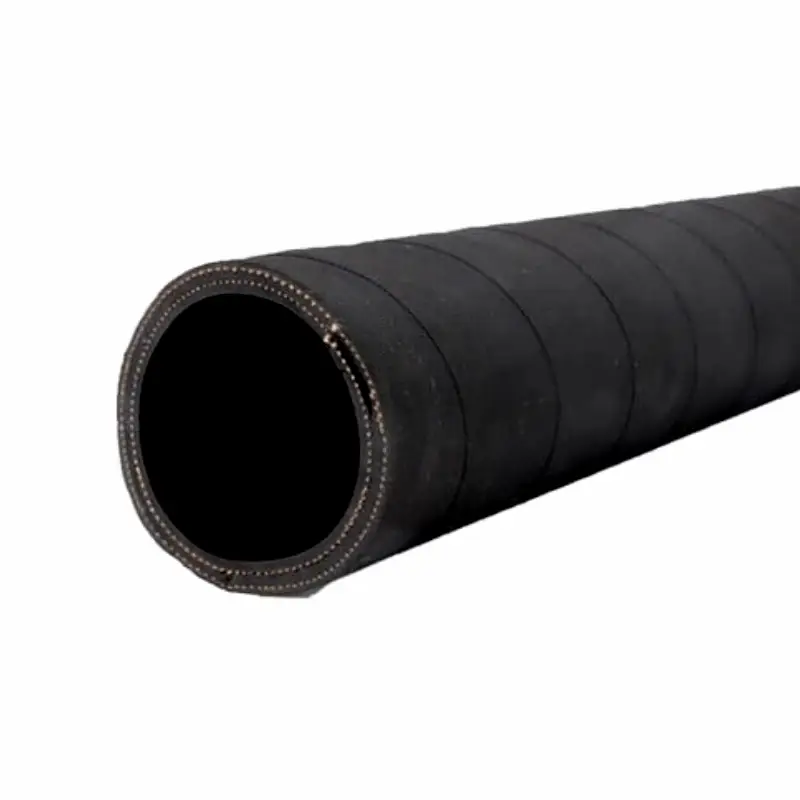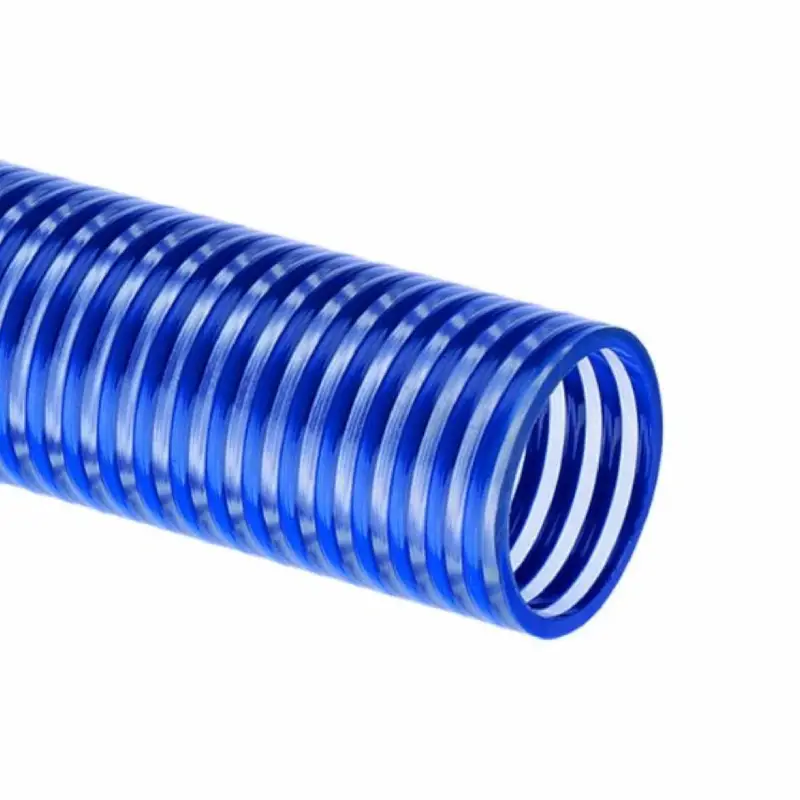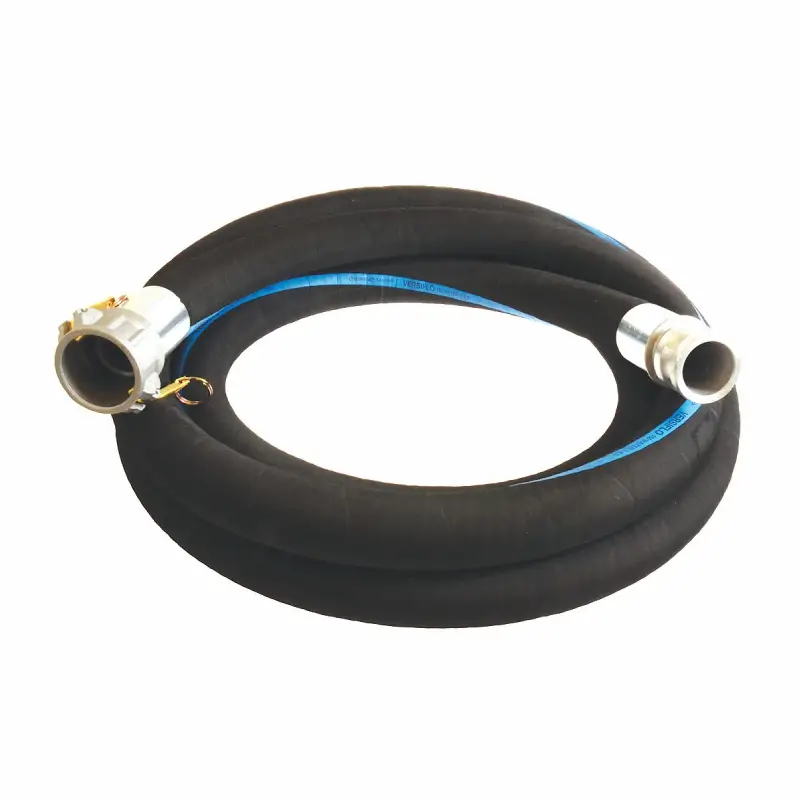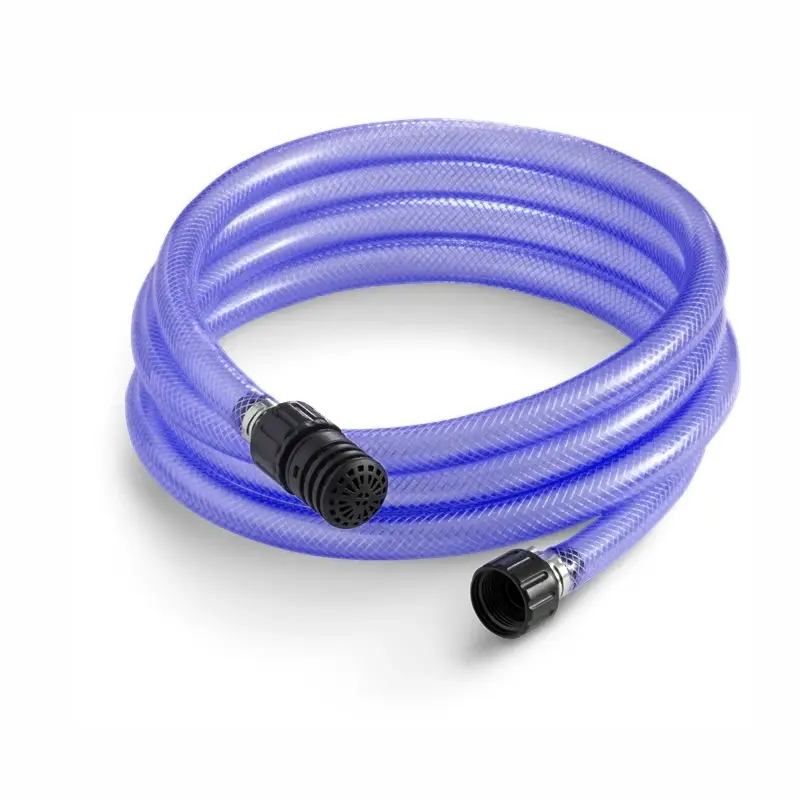We offer water pump suction hoses designed for reliable fluid transfer in industrial, agricultural, and construction applications. Our hoses provide durability, flexibility, and strong suction performance, ensuring efficient operation. Available in various diameters, lengths, and fittings, we deliver customized solutions to meet your pumping and suction requirements.
Durable construction – We use reinforced materials to resist abrasion, wear, and pressure, ensuring long-lasting performance even in demanding suction applications.
Flexible design – We design hoses to bend easily without kinking, allowing smooth installation and maneuverability in tight or complex pumping setups.
Strong suction performance – We provide hoses that maintain consistent suction power, ensuring reliable fluid transfer for water pumps in industrial and agricultural operations.
Chemical and corrosion resistance – We supply hoses that resist chemicals, oils, and environmental factors, ensuring safe, efficient, and long-lasting operation in various conditions.
Customizable fittings – We offer a range of connectors, couplings, and adapters to match your pump system, ensuring leak-free and secure connections.
We allow you to choose hose materials based on abrasion resistance, chemical compatibility, and environmental conditions. By selecting the right material, we ensure your suction hose delivers long-lasting performance and maintains reliability in demanding applications.
We offer hoses with different pressure and vacuum capacities to suit your pumping needs. By selecting the appropriate rating, we ensure safe, efficient, and consistent suction performance under varying operational conditions.
We provide hoses in various diameters and lengths to match your pump and system layout. Customizing these dimensions ensures optimal fluid flow, suction efficiency, and ease of installation in your specific setup.
We offer hoses in various colors and with custom markings for identification, safety, and workflow organization. By customizing these features, we help improve efficiency and safety during pump operation.

Water suction hoses are essential components in various applications that involve pumping water from one location to another. This water suction hose is made of premium rubber material to help you deliver water. And the rubber water suction hose can connect the inlet of a water pump to a water source, allowing for efficient and reliable water transfer.

PVC (Polyvinyl Chloride) water suction hoses are a popular and versatile option for many applications due to their combination of durability, flexibility, and affordability. Water pump PVC suction hose can be widely used in industries such as construction, agriculture, and manufacturing.

Water suction and discharge hoses are essential components in various applications that involve pumping water from one location to another. They play a crucial role in industries such as construction, agriculture, manufacturing, and firefighting.

Water suction hoses are essential components for pressure washers that rely on a water source other than a municipal water supply. These hoses allow the pressure washer to draw water from sources like rivers, lakes, ponds, or cisterns.
Water pump suction hoses are flexible tubes designed to connect a water pump to a water source. They are essential components in various applications that involve pumping water, such as construction, agriculture, and industrial processes.
Key characteristics of water pump suction hoses:
Suction hoses and discharge hoses are both used to transfer fluids, but they serve different purposes based on the direction of flow and pressure.
Key differences:
| Feature | Suction Hose | Discharge Hose |
|---|---|---|
| Function | Draws fluids into a system | Pushes fluids out of a system |
| Pressure | Operates under negative pressure | Operates under positive pressure |
| Connection | Connected to the inlet of a pump or other suction device | Connected to the outlet of a pump or other discharge device |
Understanding the difference between suction and discharge hoses is crucial for selecting the appropriate hose for your specific application.
Suction hoses are used to draw liquids, such as water, into a system. Here’s a basic guide on how to use a suction hose to draw water:
Tips:
By following these steps and considering the factors mentioned above, you can effectively suction water through a hose using a pump or other suitable device.
A suction hose is used to draw fluids or materials into a system. It creates a vacuum, allowing for the transfer of liquids, gases, or even solids from one location to another.
Here are some common applications for suction hoses:
In essence, suction hoses are essential tools for various industries, providing efficient and reliable means of material transfer.
No, a suction hose cannot be used for discharge.
Suction hoses are designed to draw materials into a system using negative pressure. They are not equipped to handle the positive pressure required to push materials out of a system.
Using a suction hose for discharge can lead to:
For discharging materials, it is essential to use a discharge hose that is specifically designed for that purpose. Discharge hoses are typically thicker and more reinforced to handle the positive pressure and prevent leaks.
The suction pipe is typically larger than the discharge pipe in many applications due to several reasons:
While these are general guidelines, the specific dimensions of suction and discharge pipes will vary depending on the application, the type of fluid being transported, and other factors.